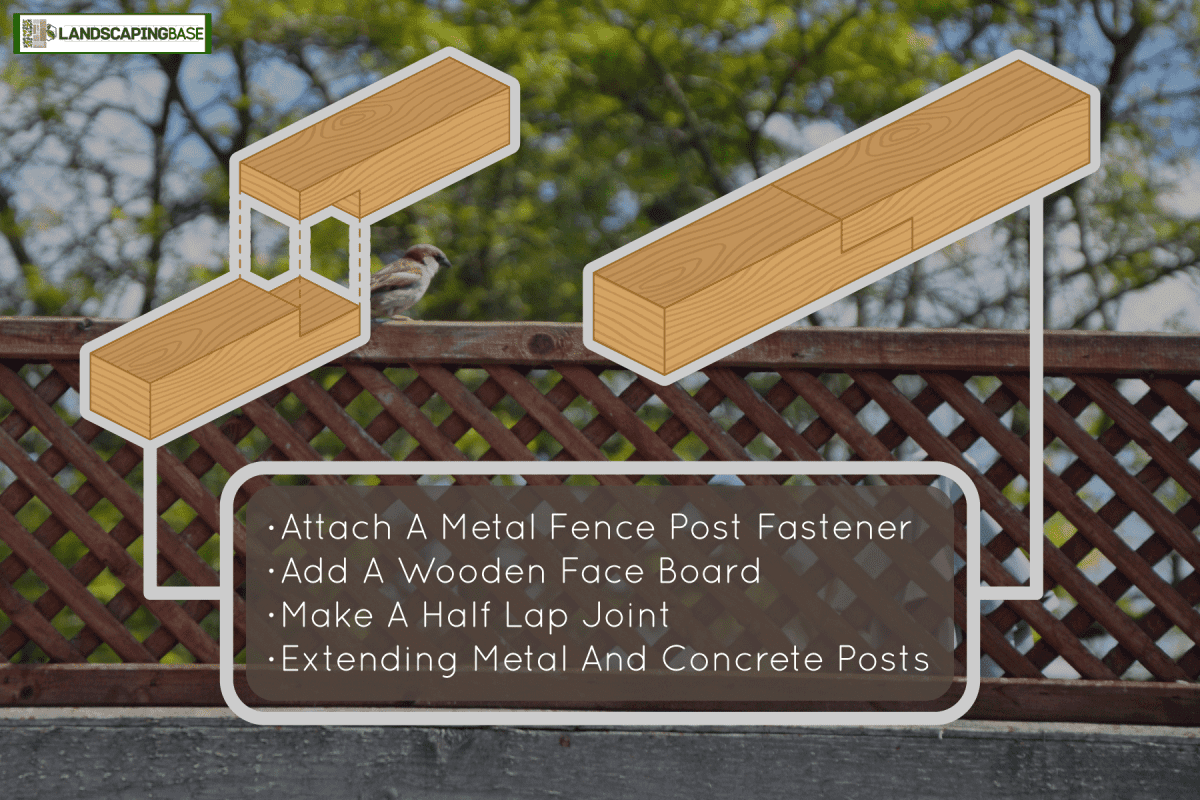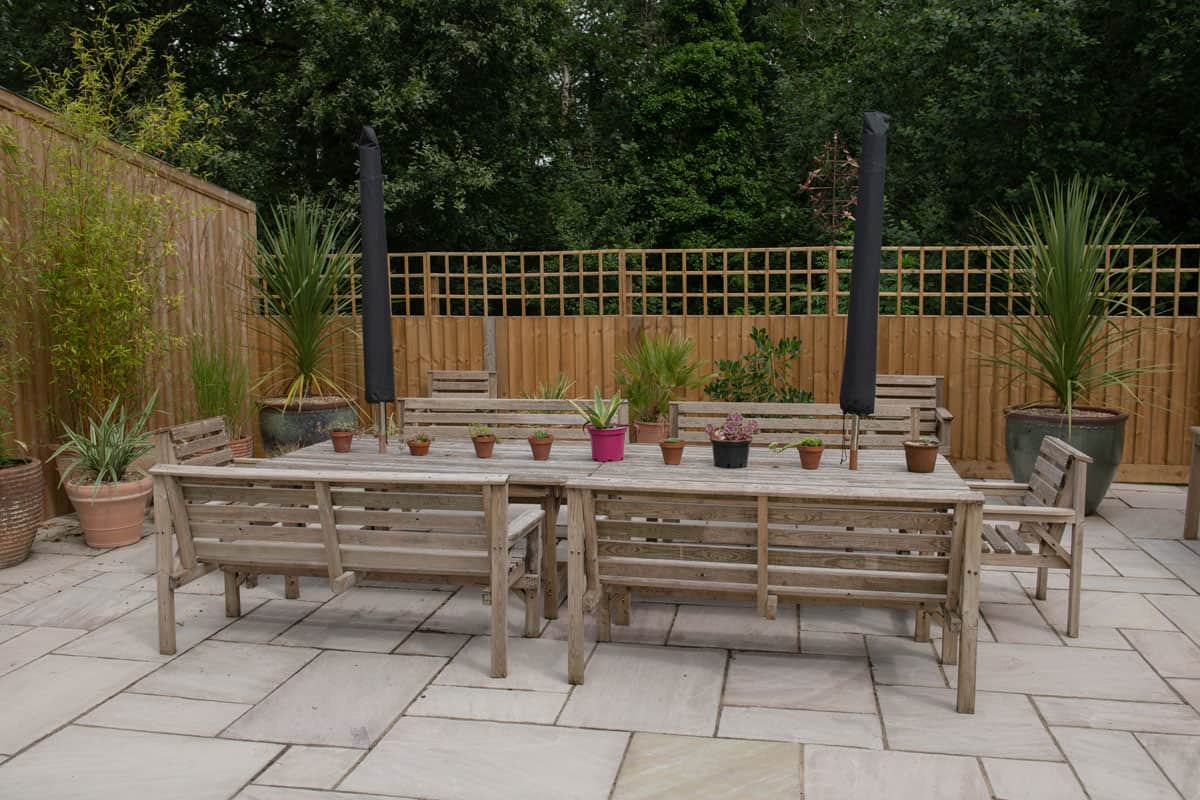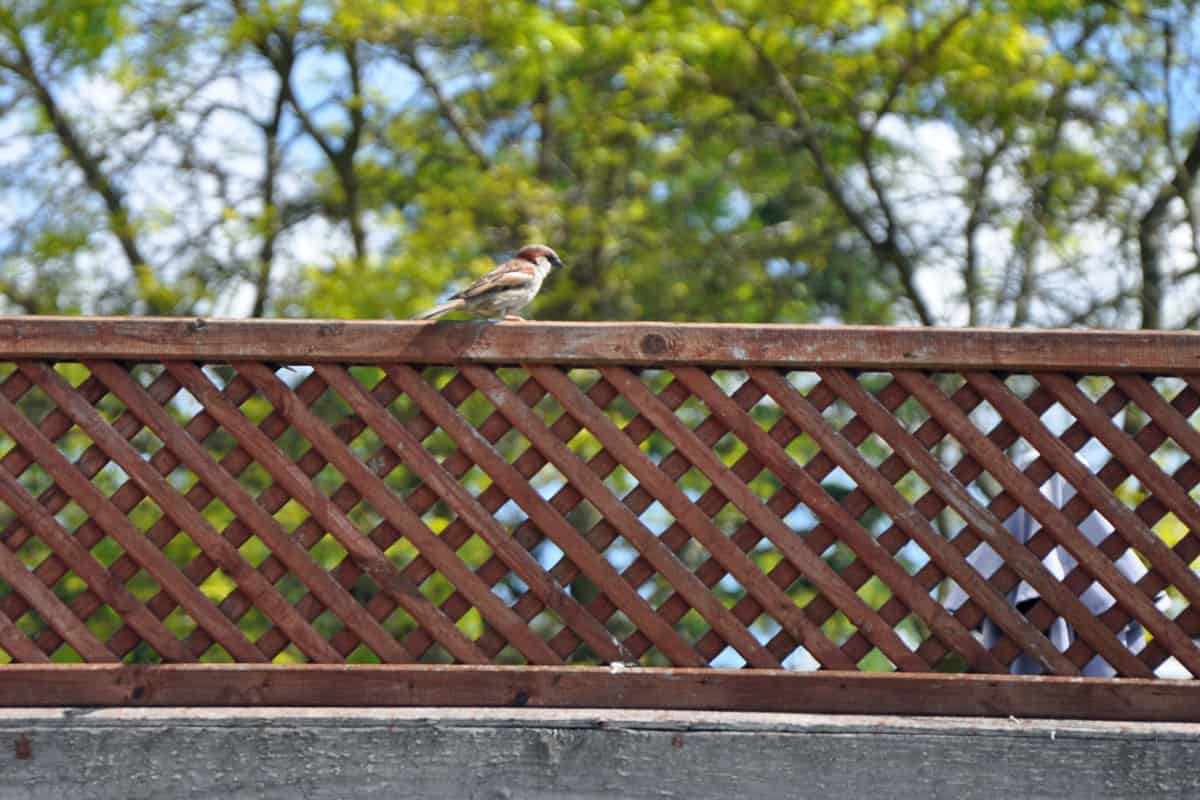A trellis can enhance the fence's overall look by increasing the height of your partition, improving privacy, and adding character to the property. This post reveals how to extend a fence post for a trellis based on our thorough research.
Post extenders are the best way to increase the height of your existing fence post. Attach and secure these extenders in place by using metal tie plates or straps, wooden face boards, or half-lap joints. You can then install the trellis between the extensions using clips or brackets.
If you want an attractive finish to your trellis extension, this article features the methods and other practical aspects of extending your post and affixing the trellis. So, stay with us to learn more.

How To Extend Wooden Posts For Trellis
There are several materials and ways to extend your post to accommodate a trellis. You can:
- use metal fasteners,
- attach a wooden face board,
- or employ a half-lap joint.
Attach A Metal Fence Post Fastener
The metal fastener also referred to as a heavy-duty tie plate or strap, is a wide piece of thick metal that overlaps the front and back of the posts to be joined and reinforced.
Different sizes and gauges of metal fasteners with pre-drilled holes and screws are available in most hardware and DIY outlets. You can also use available scraps as long as they measure at least 16 inches long, 1/8 inches thick, and 3 inches wide (for 4-by-4 inch posts).
Once you determine the extension's length and cut it, position it atop the existing post and screw the metal fasteners.
For instance, let us assume you have a 6-foot high, 4-by-4-inch wooden post and would like to extend it by 2 more feet. A 16-inch metal plate would provide 8 inches of overlap to support each structure to be attached.
You can carve a notch on the wood surface equal to the dimensions of the fasteners to embed the metal and create a sturdier clean, flat finish.
L-shaped brackets or angle bars placed on opposite sides of the post to be joined are a better alternative since they would provide sturdier support than flat metal because you fasten all surfaces.
Add A Wooden Face Board
A wooden fence post extender is a piece of lumber you attach to the front and back or the sides of the segments to be joined. It functions like a metal plate, and you can extend it to cover the entire post surface.
It is best to drill the holes in advance to avoid splitting the board along its grain before securing it with enough screws.
Use face boards made of pressure-treated wood like pine or cedar since they can withstand harsh outdoor climatic conditions.
Given the same 6-foot, 4-by-4-inch fence post and a 2-foot extension, an 8-foot, 4-inch wide, 3/4-inch thick board will firmly secure both sections and create a uniform, seamless finish.
Make A Half Lap Joint

You can make a half-lap joint by removing equal wood segments from the existing post and the extension designed to overlap and fit together.
The joint derives its name from the fact that you cut half of the material vertically up to a certain depth or distance from each segment to form a joint that is the total thickness across both posts.
Generally, 6 to 8 inches down the center of the post is adequate to provide enough stability once secured with through bolts. Most contractors and builders consider half-lap joints to be the most structurally sound method.
In our illustration, we cited a 4-by-4-inch post with a 2-foot extension. You can adjust the dimensions of the metal fastener and the vertical depth of the half-lap joint depending on the actual measurement of your post.
For added support and increased weight-bearing capacity, it is possible to brace a half-lap joint with a flat or L-shaped metal plate, especially with corner posts.
We will also consider and discuss how to extend concrete and metal fence posts.
Extending Metal And Concrete Posts
The simplest way to increase the length of metal or concrete fence posts is by using sleeves or intermediate extensions that fit over the protruding end. They are prefabricated materials of various lengths and diameters with a hollow center that you slide over and affix to the top edge of a post.
Inserts lay atop or sit on the post. It is necessary to fasten them with screws or bolts for stability and security.
Some manufacturers accept custom-made orders based on the dimensions of your fence, the type of material preferred, and the design. However, you may be unable to extend the posts if there is no adequate overlap to accommodate the extension.
How To Attach Trellis

Attaching the trellis is relatively simple. You will need u-brackets, screws compatible with the post material, and a drill. The height of the extension will determine the number of brackets you use - the taller the structure, the more support it requires.
First, place the u-brackets at the inner portion of both posts. If you plan to use only one pair of brackets, put them right in the middle. However, using two matching sets will require you to attach one on both ends of the post or extension - one on top and another at the bottom.
Use a drill and screws to attach the brackets. Once finished, insert or slide the trellis down onto the u-brackets, then fasten or affix the material using screws.
This video provides a visual illustration.
How Tall Can A Residential Fence Be?
Each area has its own guidelines and statutes regarding the overall height of residential fences. We will inform you about the standard requirements applicable in most areas.
Front yard fences must not surpass a height of 36 inches. However, houses built in corner lots must maintain a fence whose height does not exceed 32-inches.
You can also add living fences as long as they do not exceed the required height. Trees should be at most 6 feet with pruned branches. In addition, you should maintain shrubs or bushes at a maximum of 2 feet above street level.
Backyard fences should be 6 feet high. Side or rear enclosures must not exceed 8 feet. However, corner lot houses must adhere to the 6-foot rule. You must acquire a building permit if you intend to go beyond the maximum height requirement.
Why Use A Fence Extension?
Installing a fence extension has its fair share of advantages. It is an excellent way to increase the privacy of your home because it generally extends your enclosure by one to two feet.
Another reason for adding fence extensions is for pet safety. Some dogs can jump over a five-foot enclosure, while cats can leap and climb across short or small structures. By installing this material, you can contain your pets inside your yard.
Most homeowners install fence extensions for aesthetic purposes. It functions as a focal point for any landscape design. Since there are a variety of styles to choose from, it can complement other decorative materials in your patios, gardens, and yards.
In Closing

Fence post extensions are the primary material you need to use if you intend to increase the height of your enclosure, add visual interest, and maintain security and privacy. We hope this article guided and helped you with installing one.
If you enjoyed this post, please peruse our other posts:

![A man using a portable vacuum to collect dead leaves, Will A Leaf Vacuum Pick Up Mulch? [Can It Remove Leaves From Mulch?]](https://landscapingbase.com/wp-content/uploads/2022/09/Man-using-a-portable-vacuum-to-collect-dead-leaves-600x400.jpg)

